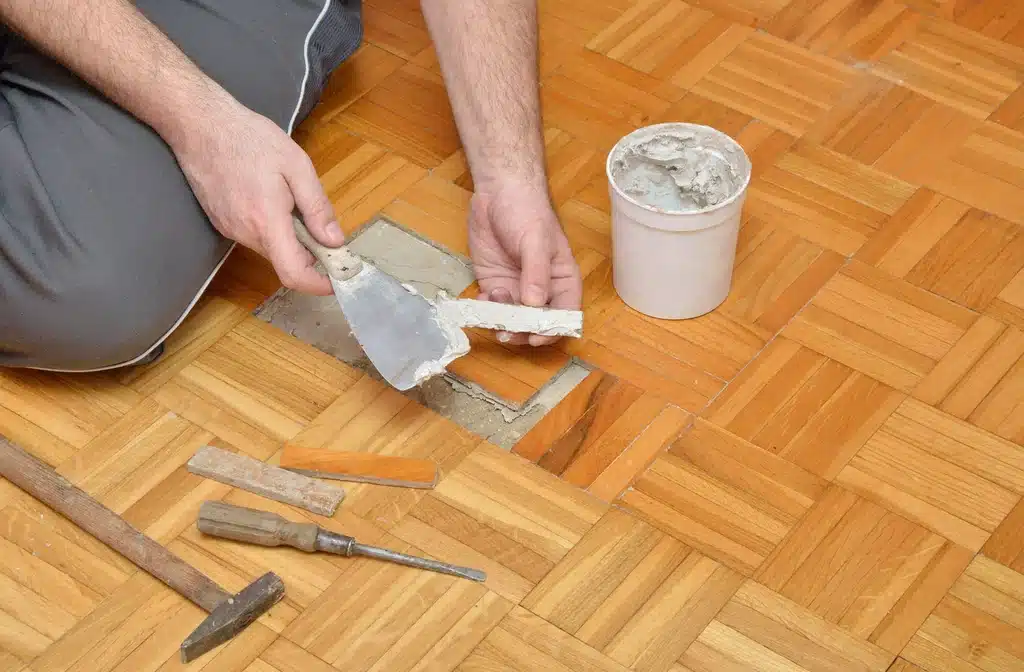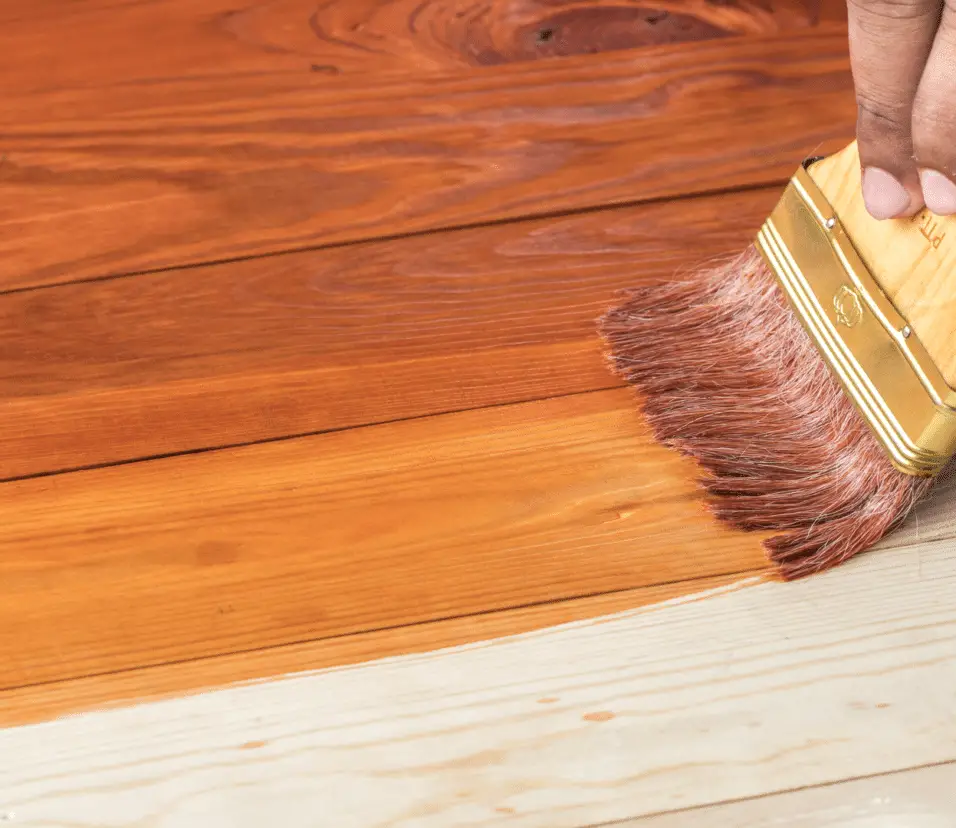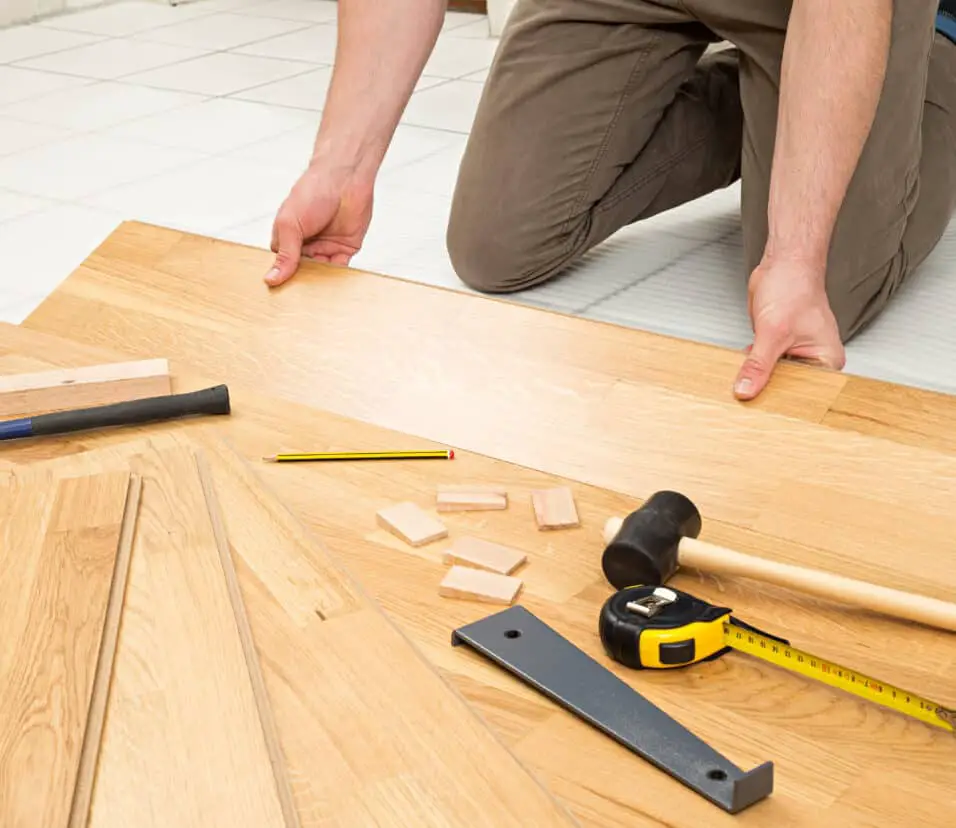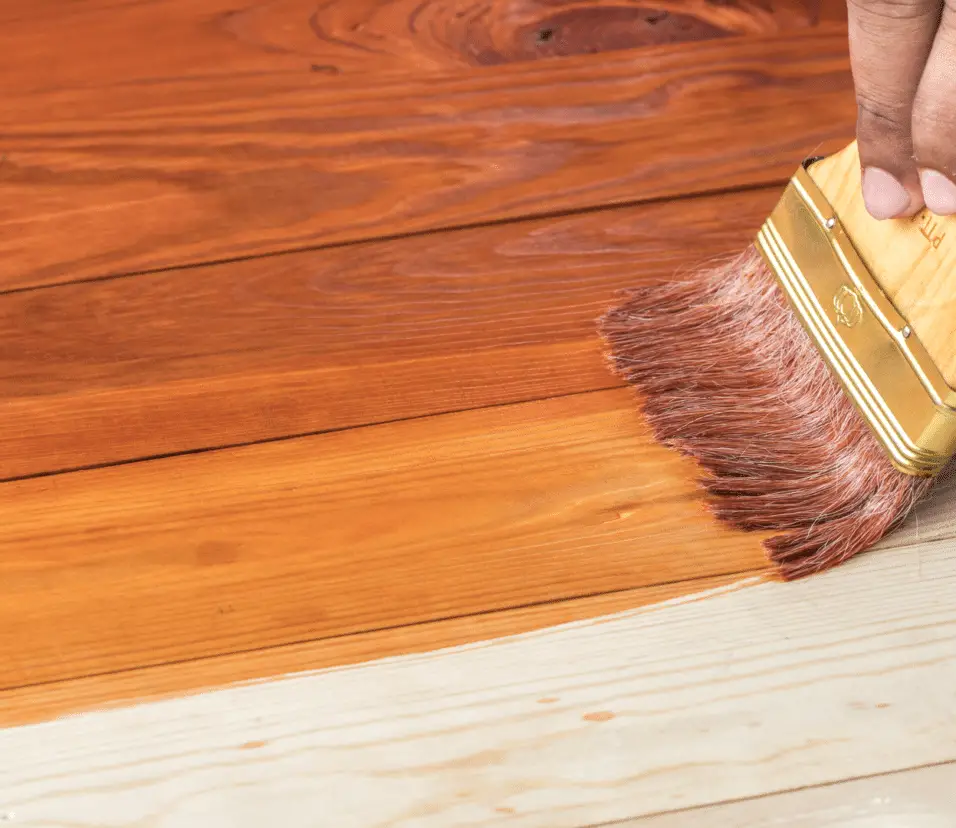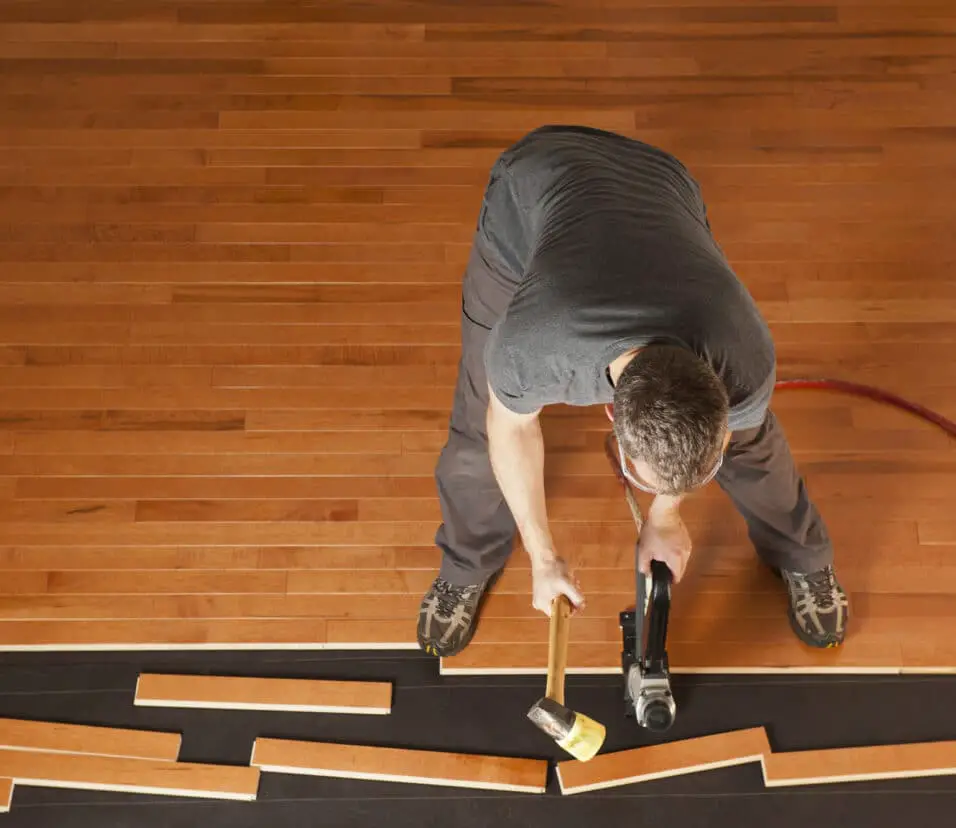How To Make A Wood Floor Shine
Introduction
How To Make A Wood Floor Shine: A gleaming wood floor can add an unparalleled sense of elegance and warmth to any home, but over time, daily wear and tear can dull its luster. Thankfully, with the right care and maintenance, you can easily restore that radiant shine and keep your wood floor looking its best for years to come. Whether you have solid hardwood, engineered wood, or laminate flooring, the process of making it shine involves a combination of cleaning, polishing, and protecting.
The first step to reviving the shine of your wood floor begins with a thorough cleaning. Before applying any polish or wax, it’s essential to remove dirt, dust, and grime that have accumulated over time. Start by sweeping the floor with a soft-bristle broom or using a vacuum cleaner with a hardwood floor attachment to pick up loose debris and particles from cracks and crevices.
Once the floor is free of surface dirt, a gentle yet effective cleaning solution is required to tackle more stubborn stains and sticky residue. A mixture of warm water and a wood floor cleaner specially formulated for the job works best. Take care not to oversaturate the floor during this process, as excessive moisture can harm the wood. Wring out the mop or cloth thoroughly, leaving it damp rather than wet. Proceed to mop the floor, following the wood grain, and pay particular attention to high-traffic areas that may need extra attention.
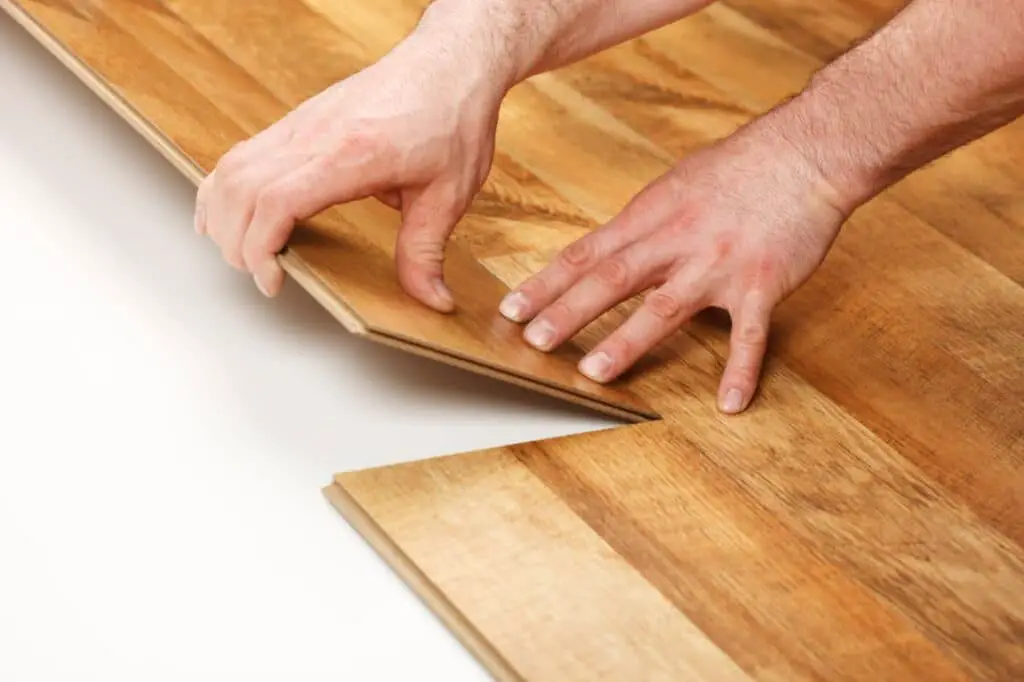
How Can I Make My Dull Wood Floors Shine?
An easy way to fill in microscratches and shine wood floors is to polish your floors after mopping. After dusting and spray mopping, use a designated microfiber mop pad to apply polish to wood floors to add shine. Bona floor polish is easy to use and adds a protection and shine with every application.
Restoring their shine is a manageable task with the right approach and a little effort. Here’s a step-by-step guide to reviving the brilliance of your wood floors and bringing back their natural radiance.
Thorough Cleaning
The first and most crucial step in making your dull wood floors shine is to give them a thorough cleaning. Remove all loose dirt, dust, and debris by sweeping the floor with a soft-bristle broom or using a vacuum cleaner with a hardwood floor attachment. Next, mop the floor with a gentle wood floor cleaner mixed with warm water. Wring out the mop well to avoid saturating the wood, as excessive water can damage it.
Scrubbing and Spot Cleaning
For areas with stubborn stains or grime, use a soft scrub brush or cloth to gently scrub the affected spots. You can use a slightly more concentrated solution of wood floor cleaner for these areas. Be careful not to scrub too hard, especially if your floor has a delicate finish.
Buffing The Floor
After cleaning, consider buffing the floor to help restore its shine. Use a microfiber cloth or a floor buffing machine if you have one. This process helps to smooth out any surface imperfections and enhances the floor’s overall appearance.
Apply Wood Floor Polish Or Wax
Once the floor is clean and dry, it’s time to apply wood floor polish or wax. Choose a product specifically designed for your type of wood floor and finish. Follow the manufacturer’s instructions on the application process. Generally, you’ll apply the polish or wax in a thin, even layer, working with the grain of the wood.
Buffing And Polishing
After allowing the polish or wax to dry according to the instructions, use a clean microfiber cloth or a buffing pad to buff the floor gently. This process helps to bring out the shine and achieve an even finish.
How Do You Make Old Wood Floors Shine Without Refinishing?
Toothpaste offers a gentle cleaning that won’t strip wood floors or dull their appearance. For everyday cleaning, use an oil soap; dilute according to package directions and apply lightly to wood floors. Rinse with a clean, damp mop, and then use another mop or towel to dry the floors completely.
Old wood floors, though full of character and charm, can sometimes lose their shine due to years of wear and tear. While refinishing is an effective way to restore their original luster, it can be a labor-intensive and costly process. Thankfully, there are several alternative methods to make old wood floors shine without resorting to refinishing.
Deep Cleaning: The first step in rejuvenating old wood floors is a thorough deep cleaning. Use a wood floor cleaner or a mixture of warm water and mild dish soap to remove dirt, grime, and old residue. Avoid using harsh chemicals or excessive water, as they may damage the wood.
Gentle Scrubbing: For areas with stubborn stains or marks, use a soft scrub brush or a cloth to gently scrub the surface. Be careful not to apply too much pressure, especially if the floor has a delicate finish.
Tackle Scratches and Scuffs: To address minor scratches and scuff marks, you can use a wood floor touch-up pen or filler that matches the floor’s color. This will help to minimize their appearance and improve the overall shine.
Buffing: Buffing is an effective way to restore shine to old wood floors. Use a floor buffer with a soft buffing pad to gently buff the surface. This process smooths out minor imperfections and enhances the floor’s natural shine.
Apply Wood Floor Polish: Wood floor polish is specially formulated to bring back the shine without the need for refinishing. Choose a high-quality polish that matches your wood floor type and follow the manufacturer’s instructions for application.
Use Baking Soda and Oil Mixture: Another DIY approach is to create a baking soda and oil mixture. Mix equal parts of baking soda and vegetable oil to form a paste. Apply the paste to the wood floor, let it sit for a few minutes, then buff it with a soft cloth. This can help to bring out the shine and nourish the wood.
Maintain Regularly: Once you’ve successfully restored the shine, maintaining it is crucial. Regularly sweep or dust the floors to prevent dirt and debris from accumulating. Place doormats at entrances to reduce the amount of dirt and moisture tracked onto the floor.
What Products Make Wood Floors Shine?
6 best wood and wood floor cleaners to make it shine.
- Method Daily Wood Cleaner.
- Grove Co. Floor Cleaner Concentrate.
- Method Squirt + Mop Wood Floor Cleaner.
- Aunt Fannie’s Hardwood Floor Cleaner.
- Seventh Generation Wood Cleaner.
- Aunt Fannie’s Vinegar Wash Floor Cleaner.
Achieving a stunning shine on wood floors requires the use of specific products designed to enhance their natural beauty without causing damage. Whether you have hardwood, engineered wood, or laminate floors, there are several effective products available to make them shine.
Wood floor polish is specifically formulated to add shine and luster to wood surfaces. It creates a protective layer on the floor, enhancing its appearance and providing a glossy finish. Wood floor polish is available in both liquid and paste forms. Choose a product that matches your floor type and follow the manufacturer’s instructions for application.
Wood floor wax, similar to polish, provides a protective layer that brings out the wood’s natural shine. Paste wax, often made from natural ingredients like beeswax or carnauba wax, can be applied in thin coats and buffed to a high sheen. However, ensure that your floor’s finish is compatible with wax, as some modern finishes may not adhere well.
Wood floor restorers are specially designed to bring life back to dull and worn wood floors. They contain ingredients that fill in small scratches and imperfections while restoring the shine. Restorers are available in various formulas, including water-based and oil-based options.
Bona® is a well-known brand that offers a range of hardwood floor cleaning products, including their popular hardwood floor cleaner. This water-based, pH-neutral solution effectively removes dirt and grime while leaving a gentle shine on the floor. It is safe for use on most types of wood floors and won’t leave any residue behind.
Murphy® Oil Soap is a classic wood floor cleaner that has been trusted for generations. It is made from natural ingredients, including vegetable oil, and effectively cleans wood floors without damaging the finish. It can also leave a subtle shine, adding to the floor’s beauty.
For a natural and budget-friendly option, you can create a DIY wood floor shine solution using equal parts white vinegar and vegetable oil. The vinegar helps clean the floor, while the oil provides a gentle shine. Apply the mixture lightly, buff it with a soft cloth, and enjoy the refreshed appearance of your wood floors.
What make your floor shine?
You just have to pour half of the white vinegar and half of the warm water into a spray bottle. This is an inexpensive solution that works well in bringing shine to your floors. The Bona Cleaner and the homemade solution work well for both plastic and engineered laminate floors.
A shining floor not only adds beauty to your living space but also creates an inviting and polished ambiance. Several factors contribute to making your floor shine and maintaining its brilliance over time.
The first step in achieving a shining floor is proper cleaning. Regular sweeping or vacuuming removes dirt, dust, and debris that can dull the floor’s appearance. Using a gentle wood floor cleaner or a suitable floor cleaning solution ensures a thorough clean without causing damage.
Regular maintenance is key to preserving the shine of your floor. Promptly addressing spills, avoiding harsh chemicals, and using soft bristle brooms or microfiber mops during cleaning prevent scratches and dullness. Employing doormats at entrances helps minimize the amount of dirt and moisture tracked onto the floor.
To enhance and restore the shine of your floor, using appropriate wood floor polish or wax is essential. These products create a protective layer that brings out the natural beauty of the wood and provides a glossy finish. Be sure to choose a product that suits your floor type and follow the manufacturer’s instructions for application.
Buffing the floor can further accentuate its shine. Whether done by hand using a soft cloth or with a floor buffing machine, this process smooths out minor imperfections and adds a gleaming touch to the surface.
If your floor has a specific finish (e.g., polyurethane, varnish, or oil), maintaining it properly will contribute to the floor’s shine. Regularly inspect the finish for signs of wear and reapply a fresh coat when needed to protect and beautify the wood.
Some homeowners prefer using natural DIY solutions to make their floors shine. For instance, a mixture of vinegar and vegetable oil, or a combination of baking soda and oil, can be applied to the floor and buffed with a soft cloth for added luster.
Natural light or well-placed artificial lighting can also enhance the shine of your floor. Sunlight streaming through windows or strategically positioned lamps can illuminate the wood, making it gleam and highlighting its unique characteristics.

How Do You Make An Old Floor Shine?
A mixture of warm, soapy water is one way to do so, using a mop and mop bucket for spectacular results. You can also use a combination of baking soda, dish liquid, and white vinegar to achieve excellent results. It helps wash away dirt and grime and leaves you with a shiny, beautiful floor that looks great.
Making an old floor shine requires a combination of cleaning, restoration, and polishing techniques to rejuvenate its appearance. Whether you have old hardwood, laminate, or vinyl flooring, here’s how to bring back its luster and revitalize its beauty:
The first step in making an old floor shine is a thorough cleaning. Remove all loose dirt, dust, and debris by sweeping or vacuuming the floor. Use a gentle floor cleaner suitable for the floor type and follow the manufacturer’s instructions for proper dilution and application.
Address any stubborn stains or marks on the floor by spot cleaning them with a suitable cleaner or a specialized stain remover. Be gentle when scrubbing to avoid damaging the floor further.
Inspect the floor for any damages, scratches, or worn-out areas. Repair minor scratches with touch-up pens or fillers that match the floor’s color. For deeper scratches or significant wear, consider refinishing the floor. This involves sanding down the surface to remove the old finish and applying a new coat of stain and sealant.
Buffing is an effective way to restore shine to an old floor without the need for refinishing. Use a floor buffer with a soft buffing pad to gently polish the surface. This process helps to smooth out imperfections and bring back a subtle shine.
After cleaning and restoring the floor’s surface, apply a suitable floor polish or wax. Choose a product specifically designed for your floor type, such as hardwood, laminate, or vinyl. Follow the manufacturer’s instructions for proper application and buffing to achieve the desired shine.
To maintain the shine of your old floor, establish a regular cleaning and maintenance routine. Sweep or dust the floor regularly to prevent dirt and debris from dulling its appearance. Use doormats at entrances to minimize the amount of dirt and moisture tracked onto the floor.
What Is The Best Way To Clean And Prepare My Wood Floor Before Making It Shine?
Properly cleaning and preparing your wood floor is essential to ensure a successful and long-lasting shine. Before applying any polish or wax, follow these steps to effectively clean and prepare your wood floor:
Sweep or Vacuum: Begin by sweeping or vacuuming the wood floor to remove loose dirt, dust, and debris. Use a soft-bristle broom or a vacuum cleaner with a hardwood floor attachment to avoid scratching the surface.
Mop with Gentle Cleaner: After sweeping, use a gentle wood floor cleaner to mop the floor. Avoid using excessive water, as standing water can damage wood. Mix the cleaner with warm water according to the manufacturer’s instructions, and wring out the mop well to ensure it is damp, not soaking wet.
Spot Clean Tough Stains: For stubborn stains or sticky residue, spot clean the affected areas using a soft cloth or sponge dampened with the wood floor cleaner. Gently scrub the stains, taking care not to use abrasive materials that could harm the wood finish.
Dry the Floor Thoroughly: Allow the floor to air dry completely before moving on to the next step. Avoid walking on the floor until it’s dry to prevent leaving footprints or marks.
Inspect for Scratches and Damage: Take this opportunity to inspect your wood floor for any scratches, scuffs, or other damage that may need attention. Minor scratches can often be addressed with touch-up pens or fillers specifically designed for wood floors.
Sanding (if necessary): If your wood floor has deep scratches or significant wear, you may consider sanding the affected areas. Sanding should only be done when necessary and with caution, as it involves removing the top layer of the wood. Seek professional advice if you’re unsure about this step.
Verify Floor Compatibility: Before applying any polish or wax, ensure that your chosen product is suitable for your wood floor type and finish. Some products may be designed for specific wood species or finishes, so it’s essential to read the label instructions carefully.
Will Polishing My Wood Floor Make It More Slippery?
Polishing your wood floor should not necessarily make it more slippery, as long as you use the appropriate products and techniques. In fact, a well-polished wood floor can enhance its beauty and provide a protective layer that resists stains and wear. However, there are some factors to consider to ensure that your polished wood floor remains safe to walk on.
When selecting a wood floor polish or wax, opt for products designed to maintain or improve traction on the floor. Some polishes have additives that enhance slip resistance, so be sure to read the product label or consult with a flooring specialist.
Applying the polish or wax evenly and following the manufacturer’s instructions is crucial. Overapplying the product can create a slippery surface, so use it sparingly and distribute it uniformly across the floor. Additionally, avoid leaving any excess product on the floor that may not fully absorb or dry.
If you choose to buff your wood floor after applying polish or wax, ensure that the buffing process is done properly. Buffing too aggressively or using inappropriate equipment can remove the protective layer or create an uneven surface, potentially leading to slipperiness.
Can I use the same polish or wax on all types of wood floors?
Using the same polish or wax on all types of wood floors is not recommended. Different wood species and finishes have varying characteristics and requirements, which means that one-size-fits-all products may not deliver the best results. It’s essential to consider the specific needs of your wood floor to ensure the polish or wax enhances its beauty and longevity.
Different wood species have distinct grain patterns, hardness levels, and natural colors. Some species, like oak and maple, are harder and more durable, while others, like pine, are softer and more prone to wear. Using a polish or wax formulated for a specific wood species ensures that it addresses the unique qualities of that wood.
The finish of your wood floor is also a critical factor. Common finishes include polyurethane, varnish, shellac, and oil. Each finish type has its characteristics, such as level of shine and durability. Using the wrong polish or wax can result in poor adhesion, uneven appearance, or even damage to the finish.
Certain polishes or waxes may contain chemicals that could react negatively with particular wood species or finishes. To avoid potential issues, it’s essential to check the product label or consult with a flooring specialist to ensure compatibility with your specific wood floor.
Consider the purpose of your wood floor when choosing a polish or wax. For high-traffic areas, you might want a product that offers enhanced durability and wear resistance. In contrast, for less-used spaces, a more straightforward maintenance product may be sufficient.
Wood floor polishes and waxes come in both water-based and oil-based formulations. Water-based products are generally quicker to dry and have less odor, but oil-based ones often provide a more natural, warm appearance. Be sure to select the type that aligns with your preferences and the needs of your wood floor.

Conclusion
To achieve the desired shine, proper cleaning and preparation are essential. Thoroughly cleaning the floor by removing dirt and grime and addressing any stubborn stains lay the foundation for a successful shine restoration. Spot-cleaning scratches and scuffs, as well as inspecting the floor for damage, ensures that the surface is ready to receive the polishing treatment.
Applying the right wood floor polish or wax is crucial for obtaining a long-lasting and radiant shine. Selecting products designed for the specific wood species and finish ensures compatibility and optimal results. Whether using commercial products or opting for natural DIY solutions, following the manufacturer’s instructions and applying the polish or wax evenly are key to achieving an even and consistent shine.
Moreover, maintaining the shine over time requires regular maintenance and proper care. Implementing a cleaning routine that includes sweeping or dusting the floor and promptly addressing spills is essential for preserving the shine and preventing scratches. Additionally, using doormats at entrances and placing non-slip rugs in high-traffic areas further protects the floor and enhances its safety.
In the pursuit of a polished wood floor, it’s essential to exercise caution, especially when using equipment such as buffing machines. Proper techniques and tools prevent damage and ensure that the floor maintains its shine without compromising its integrity.



